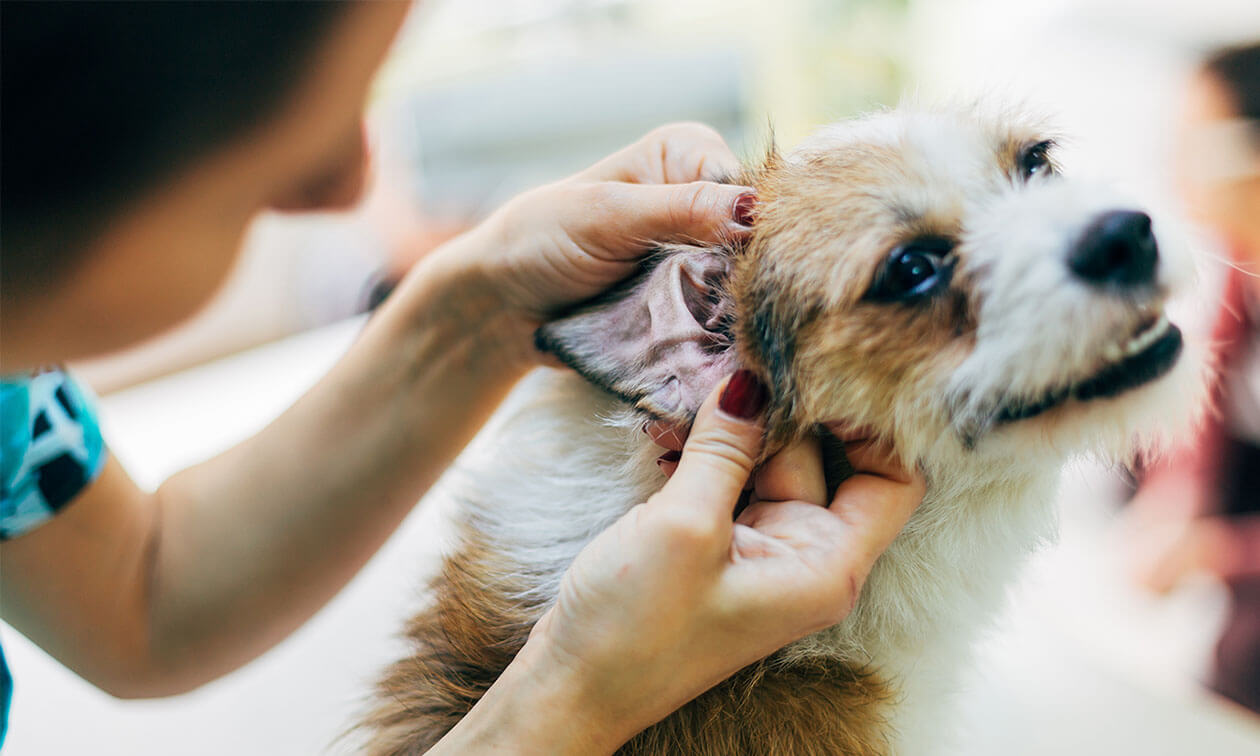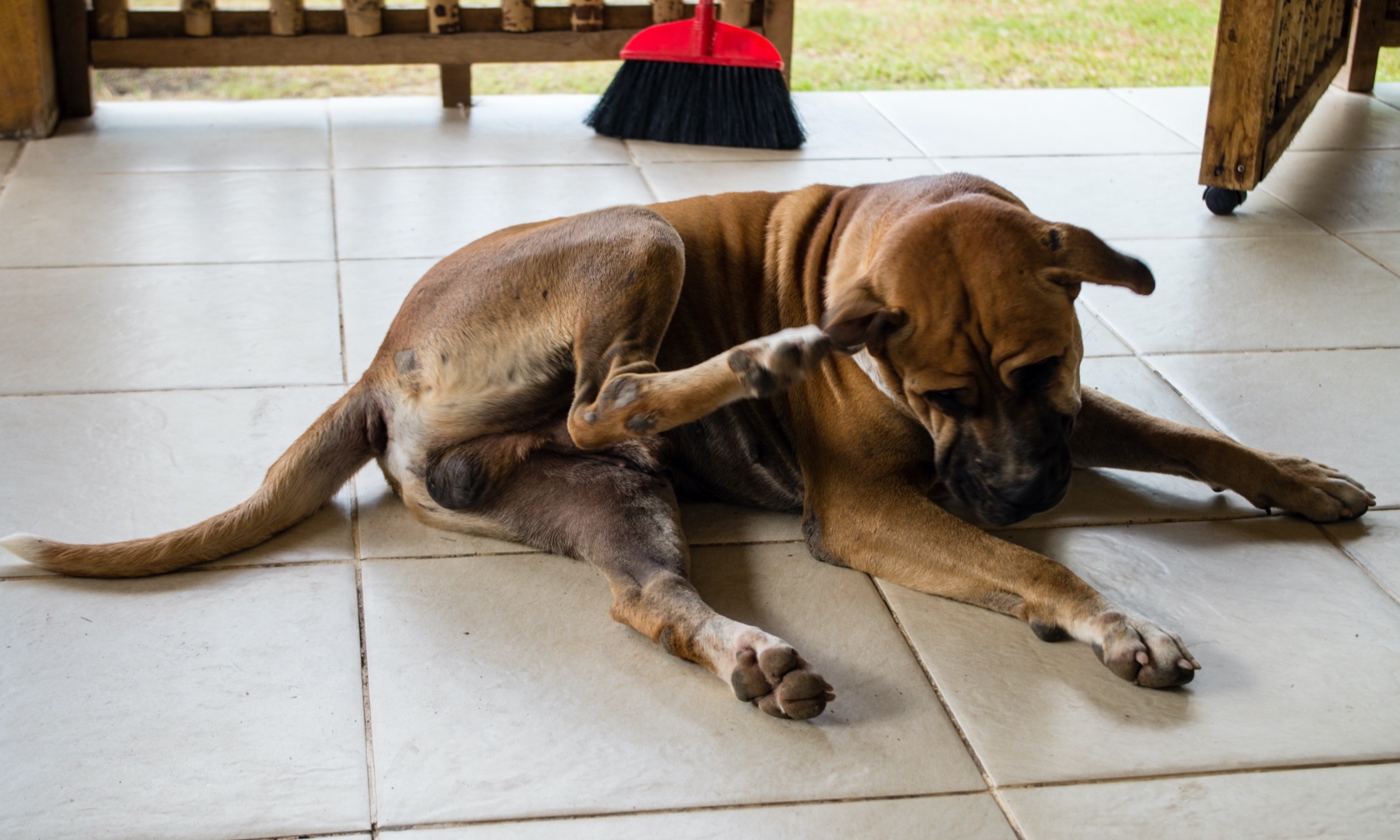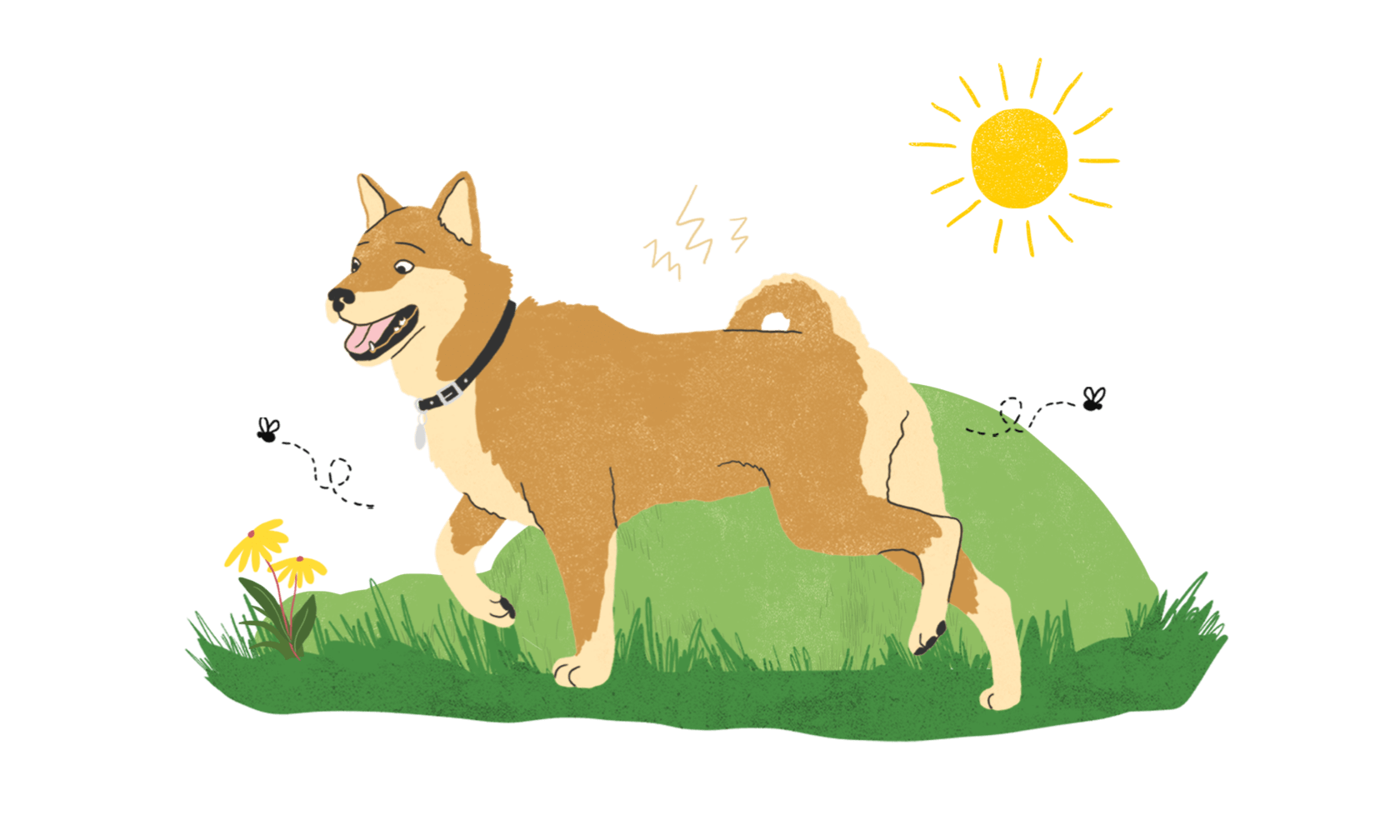Skin conditions are a common problem for dogs. Yeast infections are very itchy and can be one of the most frustrating skin problems for your dog. Do you know where and how your dog can develop a yeast infection and what to do about it?
Where You’ll Find Yeast Infections on Your Dog
A yeast infection can affect any part of the body and multiple locations at one time. Typical locations are the ear canals, and areas with skin folds such as the lip edges, paws, belly (especially the armpit and groin), and folds on the neck and face.
Why Dogs Get Yeast Infections
Your dog’s skin normally has small amounts of yeast (scientific name is Malassezia pachydermatis). Generally, this naturally occurring, non-spore-producing fungus doesn’t cause illness unless there is an abnormal skin overgrowth, otherwise known as a yeast infection.
There is always an underlying or pre-existing condition that causes the overgrowth, resulting in a yeast infection. An overgrowth can occur due to changes in the protective skin barrier and normal microflora of the skin, due to skin inflammation such as from allergies or as a result of a suppressed immune system.
If the skin produces an increased amount of oil, a yeast infection can occur. Allergic skin disease from environmental or food allergies is a common cause of excess oil production due to skin inflammation, as is a condition called seborrhea oleosa.
If the immune system is suppressed, these opportunistic yeast micro-organisms can cause infection. For example, dogs receiving immunosuppressive drugs (such as steroids, cyclosporin, or chemotherapy) may be unable to prevent the overgrowth of yeast, and a chronic yeast infection may develop.
Other causes of yeast infection include:
- Hormonal disorders like Cushing’s disease, hypothyroidism, or diabetes mellitus
- Prolonged antibiotic use that diminishes the normal skin flora that keeps yeast under control
- External skin parasites such as mites that can cause itching and skin inflammation, leading to secondary infection
There appears to be a genetic predisposition to yeast infections for some breeds, including1,2:
- Australian Terrier
- Basset Hound
- Boxer
- American Cocker Spaniel
- Cavalier King Charles Spaniel
- Chihuahua
- Dachshund
- Lhasa Apso
- Maltese
- German Shepherd
- Poodle
- Silky Terrier
- Shih Tzu
- West Highland White Terrier
Symptoms of Yeast Infections in Dogs
It’s important to have your dog evaluated by their veterinarian if you notice any of these symptoms:
- Musty odor often described as stale corn chips
- Itching, licking, or rubbing the skin
- Head shaking and scratching the ears
- Hair loss
- Swollen and warm skin
Greasy skin
- Irritated-looking skin, deep pink or red
- Scaling, flaky, and/or crusty skin
- Changes in the color of the skin (red, greyish, darkly pigmented/blackish)
- Thickening of the skin, also called elephant skin
Diagnosing Yeast Infections in Dogs
It’s important for your veterinarian to perform diagnostic tests to verify your dog has a yeast infection and identify the underlying cause. Otherwise, the risk of flare-ups will be likely in the future.
Diagnostic tests that your veterinarian will usually perform during the appointment include:
- Skin and ear cytology to collect yeast organisms
- Skin scrape to look for mites
- Other tests that may be needed in certain cases include:
- Blood work, including complete blood count, blood chemistry, and specialized tests
- Urinalysis
- Skin biopsy, where a small piece of skin is collected
- Allergy testing via a blood sample or intradermal allergy test to look for yeast hypersensitivity
Since the cause and severity of the yeast infection are different for each dog based on age, health, breed, and size, your veterinarian will prescribe a treatment plan suited to your dog’s specific needs.
Treating Yeast Infections in Dogs
Since your veterinarian is treating both underlying cause of the yeast infection, as well as the infection itself, treatment plans vary. It can be as simple as a special shampoo, spray or mousse or more involved to include food trials and anti-fungal medications.
The treatment for the yeast infection may include topical and/or oral anti-fungal medications. If only one or two areas of the skin are affected, your veterinarian may prescribe a topical spray, mousse, or cream to be applied daily.
For more widespread yeast infections, topical treatment involves the use of shampoos that contain cleansers and anti-fungal ingredients. For the first 4-8 weeks, depending on the severity of the condition, your dog will need treatment every two to three days. The medicated shampoo requires a contact time of 10 to 15 minutes before rinsing with lukewarm water. Once the condition is under control, for maintenance therapy, bathing every 7-14 days is usually sufficient.
For severe or chronic (recurring) cases, your veterinarian may prescribe oral anti-fungal medications. These are often needed for several months. Due to the risk of side effects from prolonged use in some dogs, your veterinarian may recommend regular routine blood tests.
Any bacterial infections that are present must also be treated topically and /or systemically with oral antibiotics.
In some cases, medications are needed to manage the underlying allergic inflammation and itchiness of the skin until the anti-fungal treatment takes effect. The severity of the condition will determine what medications are used and the length of time they’re needed.
Ear infections are common in dogs diagnosed with yeast infections. Your veterinarian will prescribe an ear cleaner and a topical ear medication to treat the yeast infection in the ears. Treatment of concurrent ear infections typically takes two to four weeks. It requires regular, cleaning once weekly to decrease the likelihood or frequency of reoccurrence.
Good hygiene is important to avoid spreading yeast infections to other pets or people. Wash hands with antimicrobial soap after touching your dog’s skin. Avoid prolonged close contact such as having your dog sleep in bed with you while they are being treated. Wash your dog’s clothing, collars and bedding frequently.
ZPC-02576
Yeast Skin Infection. Animal Dermatology Clinic. https://animaldermatologypdx.com/yeast-skin-infection/. Accessed May 17, 2023.
Bajwa J. Canine Malassezia dermatitis. Can Vet J. 2017 Oct;58(10):1119-1121. PMID: 28966366; PMCID: PMC5603939. https://www.ncbi.nlm.nih.gov/pmc/articles/PMC5603939/





